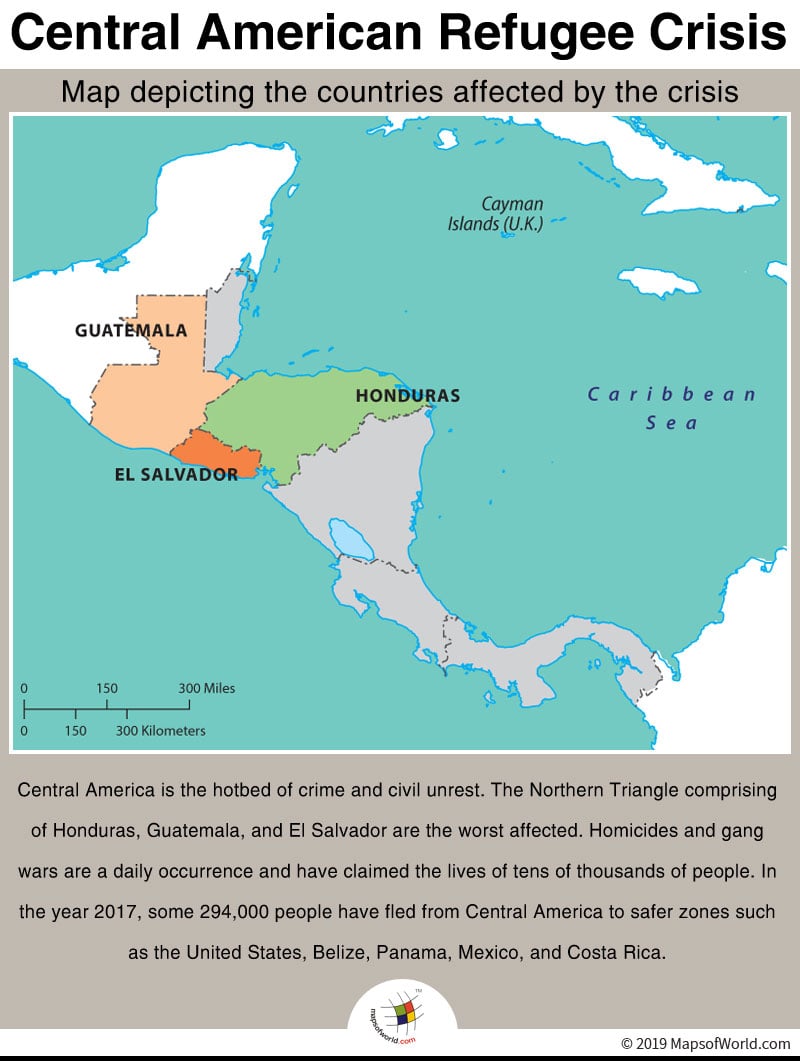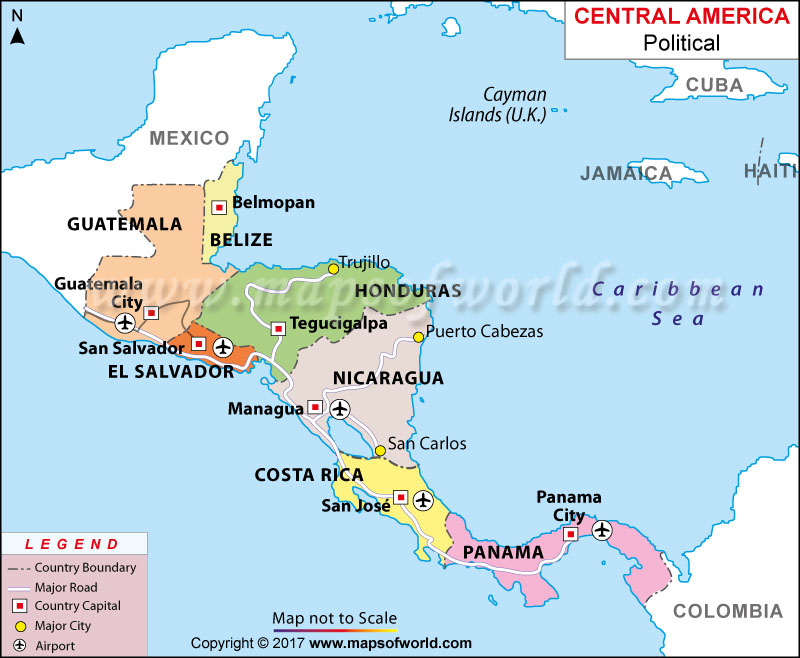What is The Central American Refugee Crisis?

Central America is a hotbed of crime and civil unrest. The Northern Triangle, comprising of Honduras, Guatemala, and El Salvador are the worst affected. Homicides and gang activities are a daily occurrence, and have claimed the lives of tens of thousands of people. It has been estimated that the violent deaths in the region are much more than some of the devastating war zones have witnessed. Honduras has had one of the highest murder rates in the world. According to a United Nations data: Honduras in 2011 saw 92 homicides per, 100,000 inhabitants, while in El Salvador and Guatemala, the number stood at 69 and 39 respectively. Many cities in South America are listed among the top 10 most dangerous cities in the world. This catastrophic situation has resulted in one of the biggest migration crises in Central America.
In 2017 some 294,000 people fled from Central America to safer zones such as the United States, Belize, Panama, Mexico, and Costa Rica. Women and children are the most affected as they become prey to kidnapping and rape. Often children take the dangerous route alone which makes them vulnerable to traffickers and other people who abuse them. To avoid recruitment in gangs and escaping violence at home or community were some of the reasons that were given by children for escaping from Central America. Extortion is a serious problem in the region. People in El Salvador and Honduras must pay exorbitant fees to organized crime groups for their safety. Those who are unable to pay have to face grave consequences. Small businesses, public transportation operators and people residing in poor neighborhoods are mainly at risk. Weak rule of law and corrupt officials further exacerbate the situation.
The present violent situation in the Northern Triangle is because of the devastating civil wars that rocked the region in the 1980s. From 1960 to 1996, Guatemala was engulfed in a violent civil war which saw around 200,000 casualties. Between 1979 and 1992, around 75,000 people were killed in El Salvador in a civil war between the leftist guerrilla groups and the government which was led by the military. Though not ravaged by a civil war, but neighboring Honduras did have to face the repercussions. The aftermath of the war had a deep impact on the economy of the region and many men were left poor and jobless. The civil war had left them with a large pool of weapons which enabled them to form organized criminal groups.
Efforts have been made by the government of the Northern Triangle countries to root out crime from their respective countries. Now there are heavy hand policies in place, which in turn gives more power to the police and administration. Strict punishments have been put in place for the gang members and their affiliates. Unfortunately, these policies did not have the desired results. Nevertheless, steps were taken by the Honduras government in 2014 to improve tourist safety. This has enabled Roatan and the Bay Islands to have a significantly lower crime rate as compared to the Honduran Mainland. The US has also done its bit by providing
financial support to the affected countries.
Nevertheless, the crises continue to haunt many people and hence making them look towards US as a potential home.
Related Links:

